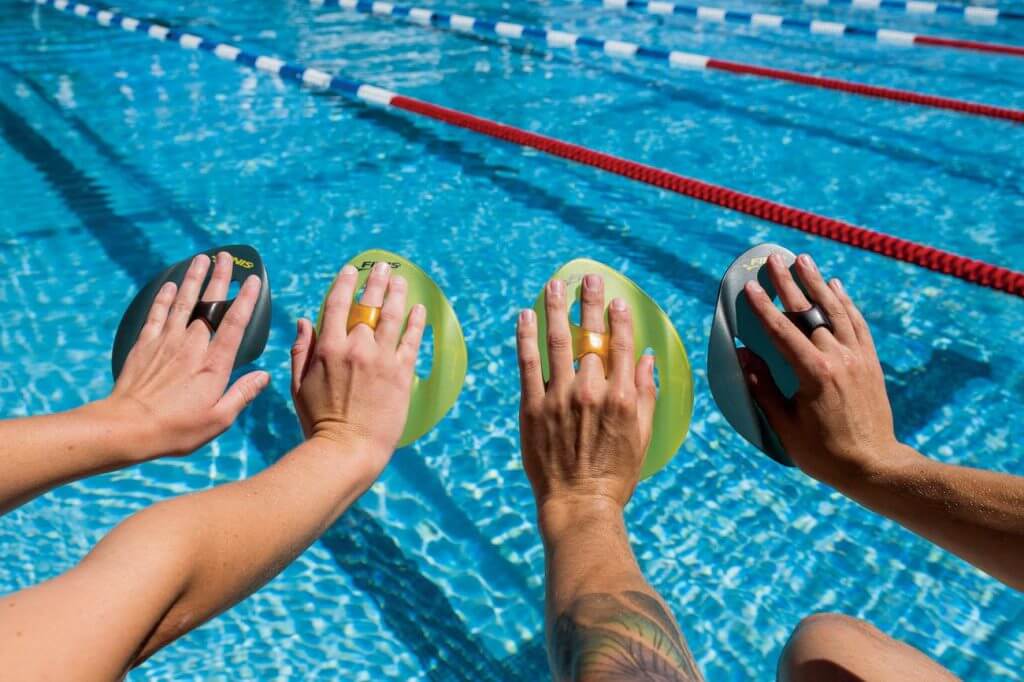Tech Tuesday: What Type of Hand Paddles Should I Get? A Look at a Variety of Choices

What Type of Paddles Should I Get? A Look at a Variety of Choices
If you have ever spent time on the pool deck, you probably have seen a rainbow of paddles hanging out of equipment bags. Paddles not only come in different colors, but also many different shapes. They are an excellent training tool for finishing your stroke, providing resistance training, and strengthening the power of the pull. When browsing through different options, it can be hard to know where to start. Here is a guide on where to start with your paddles.
Large vs Small Paddles
Generally, the larger the paddle, the more resistance they will have. With more resistance, that means that it will be physically harder to move the paddle through the stroke. When just starting out with paddles, it is better to start closer to your hand size. As you get stronger, then leveling up to the larger paddles would be appropriate. If you level up too quickly, you may put extra strain on your shoulders. Your coach is also an excellent resource to discuss leveling up your paddle size.
Solid Paddles
Most paddles that you see are ones that have small holes within them. Solid paddles are ones that don’t have any holes. These paddles are a step up in resistance from the paddles with holes. They are useful for helping you feel the amount of water you pull in each part of the stroke. For doctoring stroke length and technique, these can be useful in finding spots to fix.
Contoured or Wavy Paddles
Most beginner paddles come flat, but there are some varieties that are molded to the shape of your hand. These paddles are more comfortable for some to wear than the flat paddle. Some like them because their hands are in a more relaxed position, like when they are swimming without them.
Forearm Paddles
These paddles look very different to the others. There are not any straps and they are not shaped to fit on just the hand. With a figure eight shape, one hole will be around your wrist, and the other will be for your hand. For these paddles, they are used with the intent of getting the wrist and hand position correct in the water.
“Different Shaped”
Paddles come in many different shapes other than hand-shaped. There are some that are rectangular, triangular, and ones that look like arrows. Some of these are specially designed for certain strokes. For example, the arrow-shaped one is nicknamed “the freestyle hand paddle” that is specifically focused on strengthening the freestyle stroke. If you are looking to improve at a certain stroke, finding “stroke specific” designs is a good idea.
Fingertip Paddles
Fingertip paddles only cover the fingertips and not the palm. These are another method of checking fingertip position during the stroke. If your fingertips are not in the right place, then the paddle will slip off. They work well for fingertip position in all strokes, and are especially helpful for backstroke’s sometimes tricky finger positioning. The nice thing about these paddles is that they are also less stressful on your shoulders.



